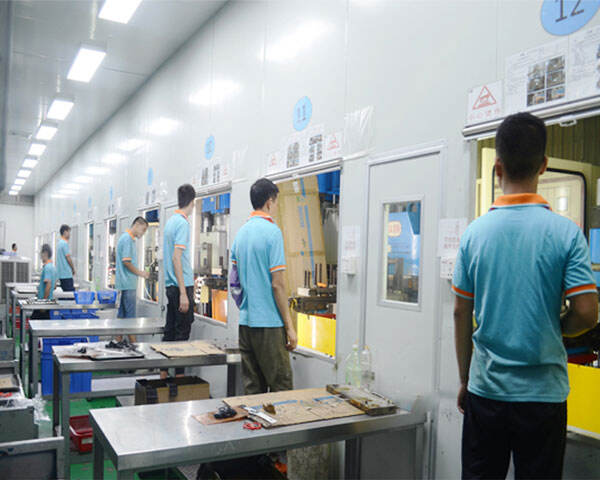The Future of Rubber Injection Molding in Product Design
In today's rapidly evolving manufacturing landscape, the potential of rubber injection molding is becoming a significant cornerstone for industries aiming to balance quality, efficiency, and sustainability. As we delve into the world of rubber injection molding, we're not just talking about a manufacturing process; we are exploring a game-changer in product design that seamlessly integrates technology, innovation, and market demand.
Understanding Rubber Injection Molding
What is Rubber Injection Molding?
Rubber injection molding is a manufacturing process utilized to produce high-quality rubber components. The process involves injecting specially formulated rubber into mold cavities under high pressure and temperature, ensuring that the material fills the mold completely. Rubber injection molding is particularly valued for its precision and ability to create intricate designs without compromising on product quality.
How the Process Works
- Material Preparation: Rubber compounds are prepared and preheated for easier flow during injection.
- Injection: Heated rubber is injected into a pre-designed mold cavity under controlled high pressure.
- Curing: The rubber material cures within the mold, solidifying into its intended shape and properties.
- Demolding: The final molded component is removed from the mold, ready for finishing or immediate use.
This step-by-step process allows manufacturers to replicate intricate designs with minimal waste, showcasing the strength and longevity of the components produced.
Key Features and Benefits
- High Precision: Ideal for complex designs, ensuring exact replication of intricate patterns.
- Efficiency: Suitable for large production volumes, leading to faster turnaround times.
- Durability: Products exhibit excellent resilience and longevity, making them valuable in various applications.
Applications of Rubber Injection Molding
Industries Utilizing Rubber Injection Molding
Rubber injection molding finds applicability across diverse sectors, including:
- Automotive: Used for seals, gaskets, and vibration-dampening components.
- Medical: Creates biocompatible parts, such as surgical instruments and tubing.
- Consumer Products: applies to household appliances, electronics, and even sports equipment.
- Industrial Applications: Involves parts needed for construction equipment, machinery, and oil and gas.
Examples of Products Made
The products created from rubber injection molding are numerous and varied. From the seals found in modern vehicles to tubing used in medical devices, rubber injection molded components play critical roles in product functionality and safety.
Advantages in Production Efficiency
This form of manufacturing enhances production efficiency through cycle time reductions and the capability to produce consistent quality across large quantities. Moreover, rubber injection molding minimizes material waste, contributing to a more sustainable manufacturing approach.
Future Trends in Rubber Injection Molding
Technological Advancements
As we look forward, technological innovations continue to propel the rubber injection molding industry forward. Methods like integrating 3D printing technology enable faster and more cost-effective mold creation, enhancing the adaptive capabilities of manufacturers.
Sustainability in Manufacturing
With growing global awareness of environmental issues, the future of rubber injection molding is strongly leaning towards sustainable practices. Manufacturers are focusing on eco-friendly materials and energy-efficient processes that minimize carbon footprint.
Increased Customization and Flexibility
Manufacturers are increasingly prioritizing customer-centric production, allowing for personalization of products. This shift towards customization is pivotal as it caters to unique end-user requirements while maintaining efficiency and delivering high-quality output.
Challenges in Rubber Injection Molding
Material Flow and Temperature Control
Achieving precise material flow and maintaining optimal temperatures throughout the curing process can be challenging. Any discrepancies may lead to defective products, impacting quality assurance.
Complex Mold Designs
While the ability to create intricate designs is a significant advantage, complex molds require advanced machinery and skilled labor, potentially increasing initial investment costs and operational capacity.
Workforce Training and Equipment Costs
The introduction of advanced rubber injection molding technologies escalates the need for a well-trained workforce. Additionally, manufacturers often face high costs related to acquiring and maintaining specialized equipment.
The Impact of 3D Printing on Rubber Injection Molding
Integration of 3D Printing Technology
The interactive incorporation of 3D printing technology into rubber injection molding processes is revolutionizing manufacturing. It allows for the rapid prototyping of molds, resulting in shorter development timelines and cost efficiencies.
Advantages of 3D Printed Molds
- Fast Design and Modification: Manufacturers can rapidly test different designs.
- Cost Reduction: Minimizes expenses associated with traditional mold creation.
- Complex Geometries: Facilitates the design of intricate cooling channels within molds, enhancing thermal management.
Future Implications for Manufacturing Efficiency
As industries continue to embrace additive manufacturing processes, the rubber injection molding landscape is expected to become more flexible and customized. This evolution will be critical in meeting future production demands and reducing waste.
The future of rubber injection molding is indeed bright, characterized by innovative technologies that lead to more efficient, flexible, and sustainable manufacturing solutions. Embracing these advancements will enable manufacturers to stay competitive, producing high-quality products tailored to evolving market needs.
Embracing the future of rubber injection molding is not only about improving existing processes, but it's also about embracing a comprehensive shift towards sustainability and customization. As trends such as automation and smart manufacturing continue to evolve, manufacturers must adapt and innovate, keeping in mind that the industry’s future relies on a blend of precision and responsibility.

